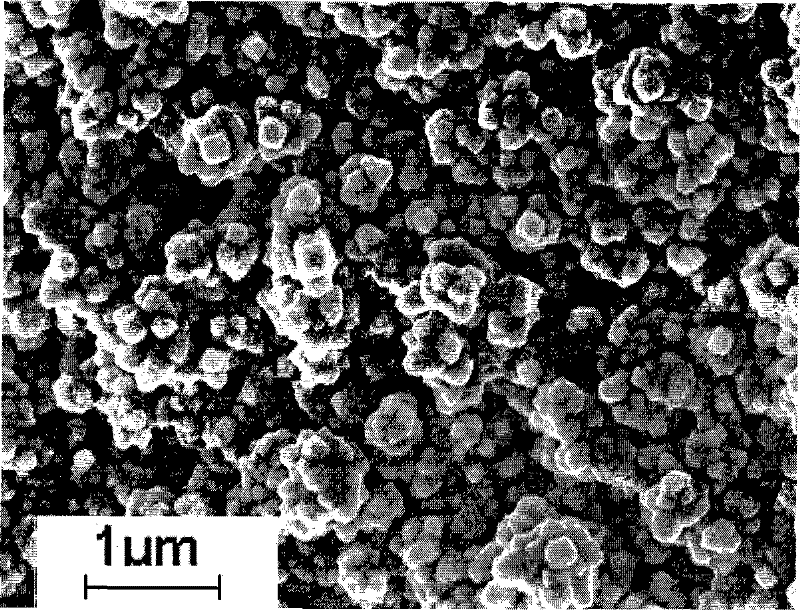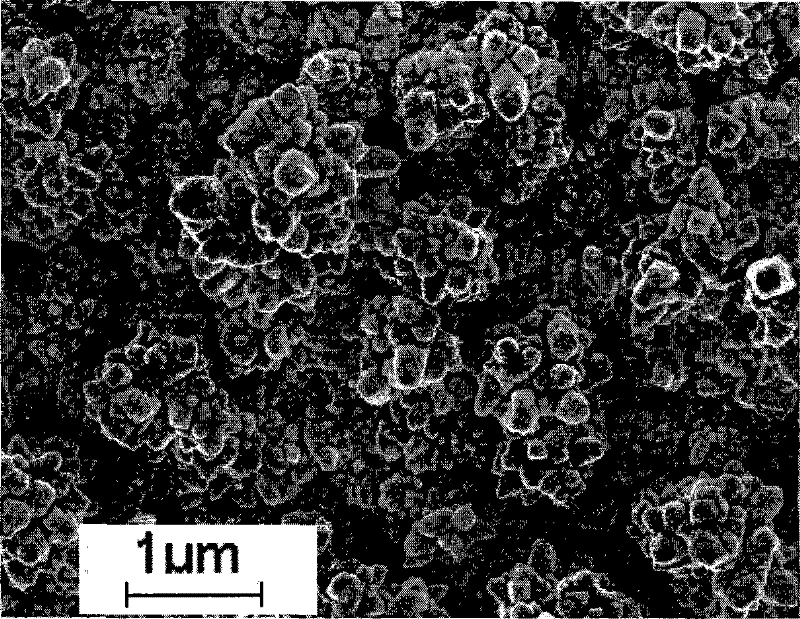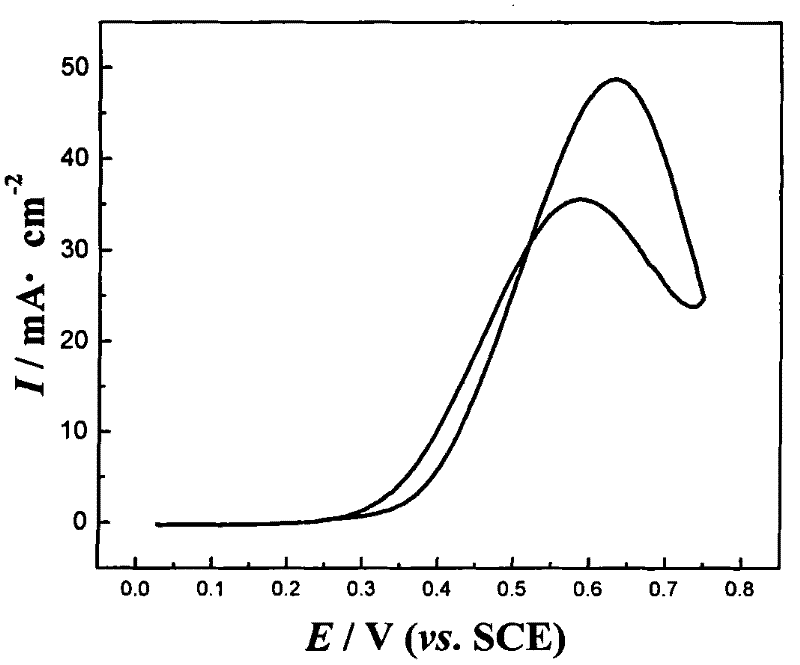Method for preparing platinum catalyst by electrodeposition
A platinum catalyst and electrodeposition technology, applied in chemical instruments and methods, physical/chemical process catalysts, metal/metal oxide/metal hydroxide catalysts, etc., can solve the problem of low dispersion and coverage, and particle size reduction , low controllability and other issues, to achieve the effect of improving utilization and activity, simple application method and reducing cost
- Summary
- Abstract
- Description
- Claims
- Application Information
AI Technical Summary
Problems solved by technology
Method used
Image
Examples
Embodiment 1
[0018] Weigh 50 mg of acidified Vulcan XC-72 into 10 mL of ethanol, add 100 μL of Solution (5wt.%, density 45mgNafion / mL) was ultrasonically dispersed for 60 minutes, mixed evenly to form a carbon slurry, The mass percentage of the solution and the ethanol suspension was 100:1; 75 μL was dropped onto the treated glassy carbon electrode (with an area of 0.28 cm 2 ) surface; after the ethanol evaporated, the electrode was vacuum-dried at 50°C for 7 hours to obtain the working electrode used in the electrodeposition process, the counter electrode was a platinum electrode, and the reference electrode was a saturated calomel electrode (SCE). The above potentials are all relative to SCE. The electrolyte is 0.5mol L -1 h 2 SO 4 +2.0mmol·L -1 h 2 PtCl 6 . Pulse electrodeposition is carried out in two stages for pulse electrodeposition of platinum, the I stage is at a peak current density of 12mA cm -2 After deposition for 120s, the peak current density in stage II is 8mA·...
Embodiment 2
[0020] Weigh 40 mg of acidified Vulcan XC-72 into 5 mL of ethanol, add 200 μL of Solution (5wt.%, density 45mgNafion / mL) was ultrasonically dispersed for 40 minutes, mixed uniformly to form a carbon slurry, The mass percentage of the solution and the ethanol suspension is 100:4; take 75 μL and drop it on the treated graphite electrode (with an area of 0.5 cm 2 ) surface; after the ethanol evaporated, the electrode was vacuum-dried at 60°C for 5 hours to obtain the working electrode used in the electrodeposition process, the counter electrode was a platinum electrode, and the reference electrode was a saturated calomel electrode (SCE). The electrolyte is 0.5mol L -1 h 2 SO 4 +0.5mmol·L -1 h 2 PtCl 6 . Pulse electrodeposition is carried out in two stages for pulse electrodeposition of platinum, the I stage is at a peak current density of 36mA cm -2 Deposition for 60s, the peak current density of the second stage is 6mA·cm -2 , the total deposition charge is 1.2C cm ...
Embodiment 3
[0022] Weigh 50 mg of acidified Vulcan XC-72 into 10 mL of ethanol, add 200 μL of Solution (5wt.%, density 45mgNafion / mL) was ultrasonically dispersed for 30 minutes, mixed evenly to form a carbon slurry, The mass percentage of the solution and the ethanol suspension was 100:2; 100 μL was dropped on the surface of the treated graphite electrode; after the ethanol evaporated, the electrode was vacuum-dried at 60°C for 5 hours to obtain the working electrode used in the electrodeposition process , the counter electrode is a platinum electrode, and the reference electrode is a saturated calomel electrode (SCE). The electrolyte is 0.5mol L -1 h 2 SO4 +1.0mmol·L -1 h 2 PtCl 6 +10 -5 mmol·L -1 PEG (MW 400). Pulse electrodeposition is carried out in two stages for pulse electrodeposition of platinum, the I stage is at a peak current density of 24mA cm -2 Under deposition for 90s, the peak current density of stage II is 10mA·cm -2 , the total deposition charge is 12C cm -...
PUM
 Login to View More
Login to View More Abstract
Description
Claims
Application Information
 Login to View More
Login to View More - R&D
- Intellectual Property
- Life Sciences
- Materials
- Tech Scout
- Unparalleled Data Quality
- Higher Quality Content
- 60% Fewer Hallucinations
Browse by: Latest US Patents, China's latest patents, Technical Efficacy Thesaurus, Application Domain, Technology Topic, Popular Technical Reports.
© 2025 PatSnap. All rights reserved.Legal|Privacy policy|Modern Slavery Act Transparency Statement|Sitemap|About US| Contact US: help@patsnap.com



